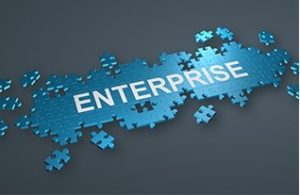Achieving architectural and operational simplicity within the datacenter has historically been a challenge for many organizations. Hyperconverged solutions have been a huge step in the right direction on this front, offering a number of benefits not seen from more traditional three-tier architectures.
In contrast to the three-tier approach, HCI provides an architecture that scales linearly as needs change, and this has allowed infrastructure design to transition from a costly predict-and-overbuild exercise to one that starts small and expands incrementally.
The benefits of HCI don’t stop at planning and scalability, though. By collapsing the number of independent infrastructure layers that must be managed through use of virtualization, software defined storage and networking, the level of administrative complexity involved in managing infrastructure has been dramatically decreased, as well.
While there are undoubtedly shared properties of all HCI solutions that can be beneficial for many businesses, the approach Dell Technologies has taken with VxRail is particularly valuable. This post will take a look at the top five ways VxRail can help your business achieve the architectural and operational simplicity that has, to this point, been difficult to obtain.Single Vendor Solution
Unlike many competing solutions, VxRail is a solution constructed from top to bottom using components and software produced by Dell Technologies: The virtualization layer consists of the industry-leading vSphere hypervisor, and shared storage features are provided by VMware vSAN, which is directly integrated into vSphere. Rounding out the solution is the hardware platform, the proven PowerEdge line of servers from Dell.
Aside from making procurement of the solution more straightforward, this type of vertical integration is especially useful when it comes time to reach out for support in the event of an issue. Questions that might arise with a multi-vendor solution include:
- Does the hypervisor vendor, software defined storage vendor or server vendor have ownership of the issue?
- How, as the customer, do you manage a coordinated effort between vendors in a complex troubleshooting situation?
Fortunately, with VxRail, these stressful situations and the questions that come along with them do not apply. Dell Technologies owns all related issues through resolution, providing a streamlined support experience that simplifies day-to-day operation.
Automated Deployment and Lifecycle Management
A key operational efficiency feature of VxRail is the inclusion of automation features that streamline both initial deployment and future expansion of deployed clusters. Instead of requiring a lengthy and manual deployment process, implementation teams can quickly populate configuration information and initiate automated deployment or expansion of the system using the same workflow.
Any team who has configured a traditional three-tier solution from scratch can appreciate the efficiency gains resulting from these improvements. However, a feature bound to be appreciated by operations teams everywhere is the integrated lifecycle management capability of VxRail.
Through joint development efforts by VMware and Dell, all elements of the stack including hypervisor (vSphere), hypervisor management (vCenter), and server firmware (PowerEdge) can be updated in automated fashion and orchestrated in the correct sequence to maximize availability and minimize adverse events.
Cross-referencing release notes from multiple vendors and verifying interoperability of firmware and hypervisor versions is now a thing of the past with VxRail, as is manual deployment of firmware and hypervisor updates. On this point the rapidly-growing group of satisfied VxRail customers agree – this is a significant step toward achieving operational simplicity in the datacenter.Storage Policy Based Management
With VxRail, the data associated with each virtual machine can be protected according to its individual availability requirements. This type of per-VM granularity is not seen with other solutions – most offer adjustment of data replication or RAID type on a per-volume/container, not per-VM, basis.
This is an important point because traditional volume-style (and by extension, storage container) management is operationally cumbersome. Why should a full VM data migration be required just to change the level of data protection? Additionally, why should you have to predict the amount of storage required for each level and provision these independently?
With VxRail, traditional storage management and provisioning issues like these are a non-issue. A single, shared pool of storage is provided by vSAN, and each VM is stored / protected according to its storage policy. If business needs change at any point and a certain VM becomes more (or less) important, data availability policies can be adjusted dynamically and on-demand.
Compared to the detailed spreadsheets often needed by storage administrators to manage traditional storage arrays and keep track of RAID types, volume sizes, number of drives, estimated IO and hosted workloads, storage policy-based management with vSAN represents a significant operational improvement.Stretched Clustering
Customers hosting high-priority business applications have historically turned to stretched cluster architectures as a way of providing protection against complete site failure and achieving the lowest RTO/RPO possible. And this was for good reason: when it comes to downtime, time is money, and the financial impact of this downtime often justified these types of infrastructure investments.
Unfortunately, the cost and complexity of stretched-cluster solutions often left their benefits out of reach for many customers that could have otherwise benefited. In a very positive development, the highest levels of solution availability, provided by stretched clustering, no longer require correspondingly high levels of technical complexity.
Through VxRail stretched clustering, disaster tolerance has been made both obtainable and manageable for the average customer. Provided basic physical site, latency and network bandwidth requirements are met, configuration of a stretched cluster using VxRail is a near-trivial operation using a single administrative console.
Useful to the ongoing maintenance of this type of configuration, important health indicators like node-to-node and site-to-site communication, as well as data health, are easily made available through this same administrative console, the vSphere Web Client. To add to the list of benefits, the site failure tolerance of each VM can be adjusted using (you guessed it) VM Storage Policies.
Compare these benefits versus a traditional stretched-cluster configuration using array-level replication and there is no question, the VxRail approach is by far more straightforward to maintain and represents a significant improvement in operational efficiency.Disaster Recovery
Finally, while there are other solutions in the HCI space that offer integrated disaster recovery capability, the RecoverPoint for VM’s software included with VxRail solutions sets itself apart thorough its robust feature set and tight integration with the vSphere client.
As with VM Storage Policies at the vSAN level, RecoverPoint replication policies can be applied per virtual machine and be used to replicate this data either synchronously or asynchronously. When it comes time to test or fail over in response to an outage event, virtual machine failover can easily be orchestrated from within the vSphere client. Should additional user-defined testing be required to verify failover of specific applications is successful, those tests can be easily added to the failover workflow. It’s that simple.
Say the words “disaster recovery plan” around an IT operations team and you are likely to witness a collective cringe and potential flashbacks to the last DR test gone wrong. The results provided by VxRail and RecoverPoint for VM’s should go a long way toward relieving the DR-related pain and suffering experienced by operations teams everywhere.Conclusion
Compared against traditional legacy-style solutions and even modern competition from other HCI vendors, VxRail offers a unique set of features and integrations that make it appealing for a wide range of customers and use cases.
We believe that these features, particularly in the areas of lifecycle management and stretched clustering, make VxRail worth a look if your aging IT infrastructure is a cause of operational pain for your business.
If you would like more information, or if you would like to schedule an in-person briefing on the benefits of VxRail, please Contact Us.




